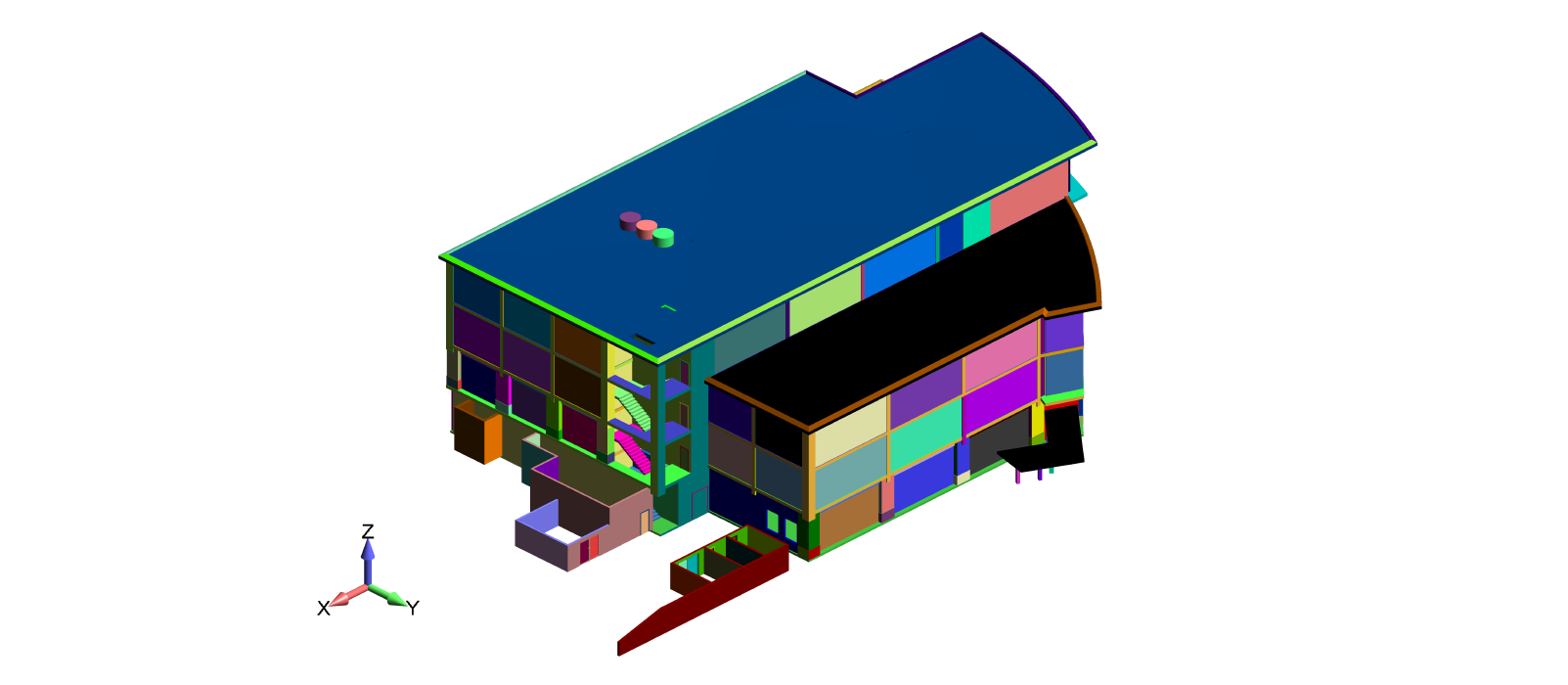CFD Simulation of Possible Diesel Generator Exhaust Infiltration into HVAC System

Analysis
Objective
The objective of this analysis was to develop a computational fluid dynamics (CFD) simulation of air flow around a medical facility's HVAC external air inlets. These air inlets were unfortunately located a bit too close to the building’s emergency power generation system (a large diesel generator set). The client’s concern was that during a power failure, diesel exhaust might find its way into the building and into their medial operating theaters. The goal of the CFD model was then to predict the flow of the diesel exhaust plume and whether or not it may be picked up by the air-handler intakes during worst case air flows. The flow model was analyzed by placing the building structure into a virtual wind tunnel and subjecting it to prevailing wind conditions.
The project required a fair amount of results interpretation since our client's final customer were eye doctors and even the chance that diesel exhaust and soot particles might enter their facility was completely off the table. Leveraging our CFD consulting experience, we created different visualizations showing particle tracing from the diesel exhaust stack under slack to 100 MPH wind conditions. We also studied the effects of heavy soot particles and time after time, showed no diesel exhaust infiltration. What was interesting in this work is that the exhaust plume behaved somewhat like a rocket motor due to its high exit velocity and temperature. This made the simulation a bit easier since buoyancy effects tended to create a thermal plume around the exhaust to help drive the smoke upward and away from the building. Final results showed that the hospital’s emergency room air supply would remain uncontaminated while on backup power. By not having to move either the HVAC inlets or the diesel generator, our client saved thousands and thousands of dollars and more than paid for this CFD consulting project. We feel that such cost savings is a key reason that Predictive Engineering continues to do well in CFD consulting over the years since our work often pays for itself in insight, improved designs or just confidence that a current design will perform as intended. Please feel feel to contact us if you have any questions or just talk about how our CFD consulting services might benefit your company.
PDF Download





